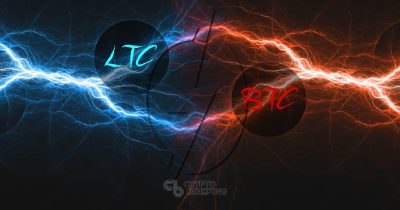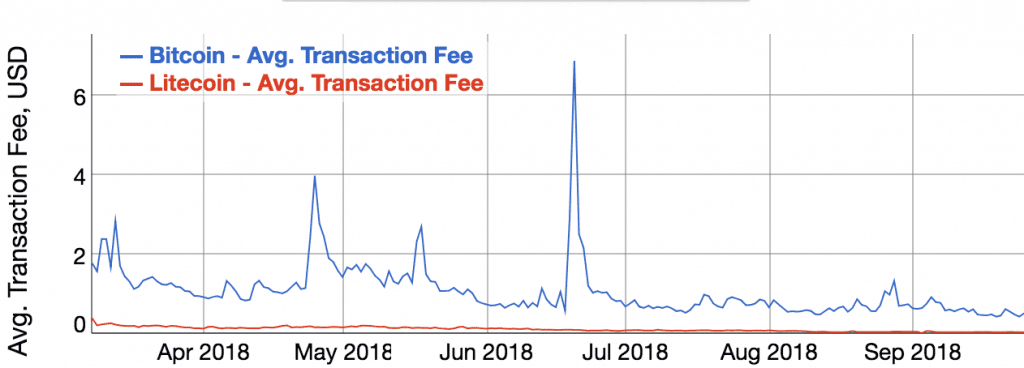Litecoin, Not Bitcoin, Will Drive The Lightning Network

Share this article
The Lightning Network is supposed to fix Bitcoin’s slow transactions and high fees, but so far it’s caused as many problems as it solved. Luckily, there’s another cryptocurrency waiting to take up the slack.
The idea of using Litecoin as an easy onramp to Lightning payments is not new. As Charlie Lee tweeted earlier this summer:
Litecoin will also be the easiest onramp onto the Lightning Network. BTC takes too long and fees to high? No problem. Open an LTC payment channel on chain cheaply and quickly, then atomically swap for BTC if/when you need to. This can be done in one step using submarine swaps! 😮
— Charlie Lee Ⓜ️🕸️ (@SatoshiLite) July 11, 2018
The idea of Litecoin as “silver to Bitcoin’s gold,” has fallen out of favor as Mr. Lee’s esteem diminished. But for a number of reasons, not only is Litecoin a likely contender, it may be Lightning’s only path to adoption.
Lightning Still Throws Sparks
Before we get under the hood, let’s recall how the engine works. The Lightning Network is the solution to Bitcoin’s slow blocks and high fees, which make everyday spending impractical. While some cryptos have explored other scaling solutions, the Lightning Network is an exchange of instant, peer-to-peer IOUs, which makes it reasonable to use Bitcoin to buy a sandwich.
Although Crypto Briefing has poked gentle fun the Lightning Network’s, routing problems and bugs, these are problems that clever developers can eventually solve.
But there are a few problems that can’t be solved, because they are inherent to the Lightning Network’s design. One is that there’s no way to totally escape transaction fees: although Lightning transactions are extremely cheap, you still have to pay a regular Bitcoin fee to open and close your channels.
By one calculation, it takes sixteen transactions before Lightning is cheaper than Bitcoin Cash, with comparable figures for other altcoins That’s a lot of sandwiches.
The second problem is that Lightning channels are not secure, and therefore unsuitable for large volumes. Lest we be accused of exaggerating, here it is in the words of Andreas Antonopoulos, one of Lightning’s most respected advocates:
There is a security risk. That system will have keys on it, so it is a hot wallet. And if you’re running that hot wallet with lots of bitcoin on it then it’s a target for attack, and someone can hack into your node and use it to drain your wallet.
So the result is something a bit like a Rewards card. You might put a few dollars in a Starbucks card to save a few percent on coffee. But you wouldn’t put more than a ten or twenty, in case you lose the card; and you’d be crazy to put more than a hundred.
At the time of writing, the average Lightning channel had a capacity around $59.
But it takes sixteen lattes to get your money’s worth, and you can’t top up as you go. While some maximalists might relish the thrill of Lightning for Bitcoin’s sake, most of us have enough trouble using a regular crypto wallet.
Big and Small Transactions, but not Medium Ones
The result is that Lightning is a brilliant solution, but for the wrong problem.
At present, Bitcoin is a good way to make a hundred-dollar transaction, and through the Lightning Network can also route a hundred different one-dollar transactions. But it’s not a great solution for medium-sized or infrequent transactions, except among true believers.
Which is where Litecoin comes in.

Since the Lightning Network launched in mid-March, Bitcoin fees averaged at around a dollar, although they declined as prices fell. The red line hugging the X-Axis is the average fee for Litecoin, which never exceeded 0.21 cents.
That’s a world of difference, especially to the casual users to whom “mass adoption” refers. No rational actor is going to spend a dollar to open/close a Lightning channel, unless they’re very frequent users. A Lightning channel with Litecoin, on the other hand, could be funded with ten or even five dollars, and cost less than what you’d leave in the tip-jar.
The result is a currency that fills up all the holes in the crypto-economy: not only for macro- and micro-transactions, but also everyday expenses. In crypto as well as in real life, silver, not gold, is the best conductor of electricity.
The author is not invested in Litecoin, but does own Bitcoin and Bitcoin Cash.
